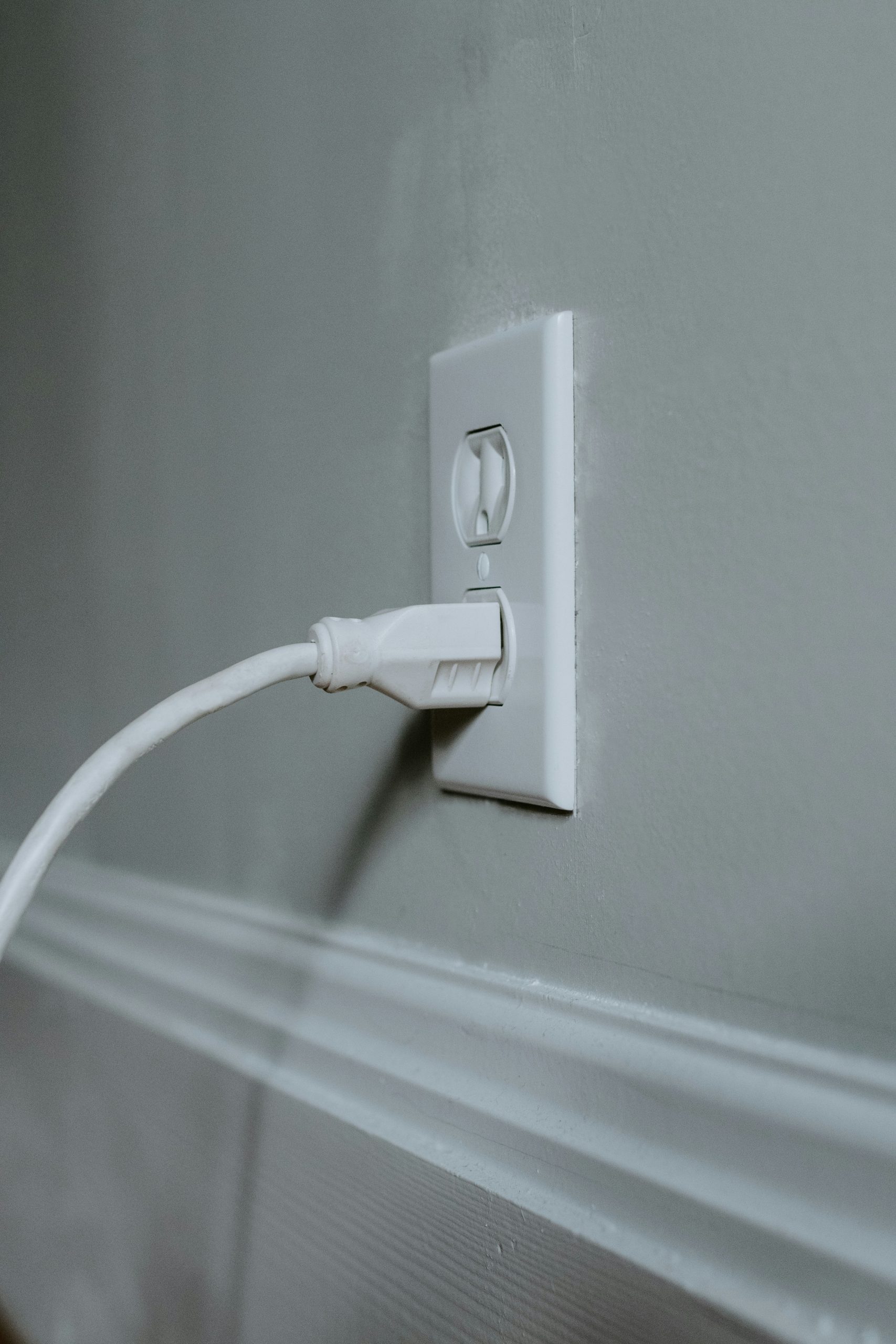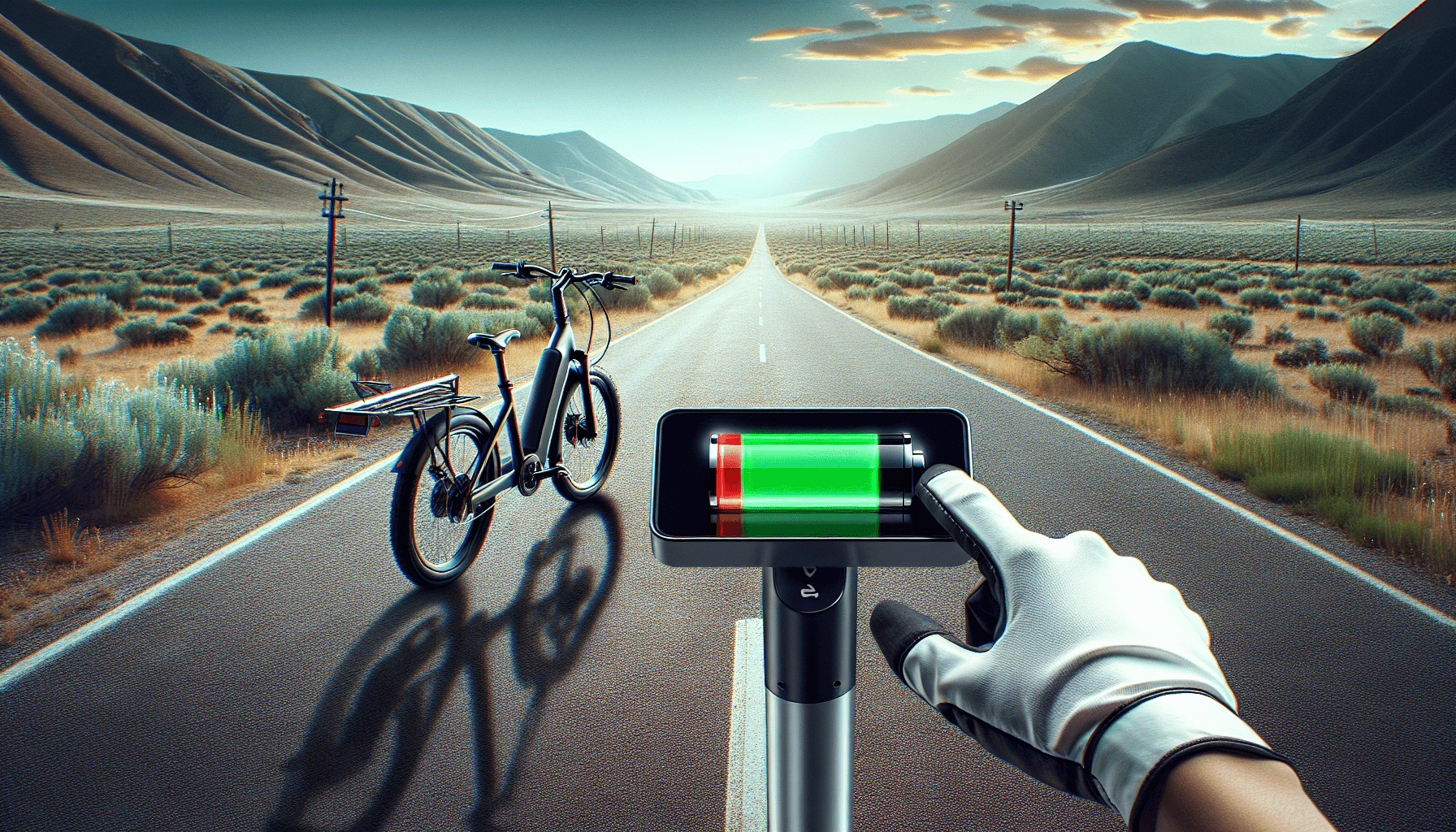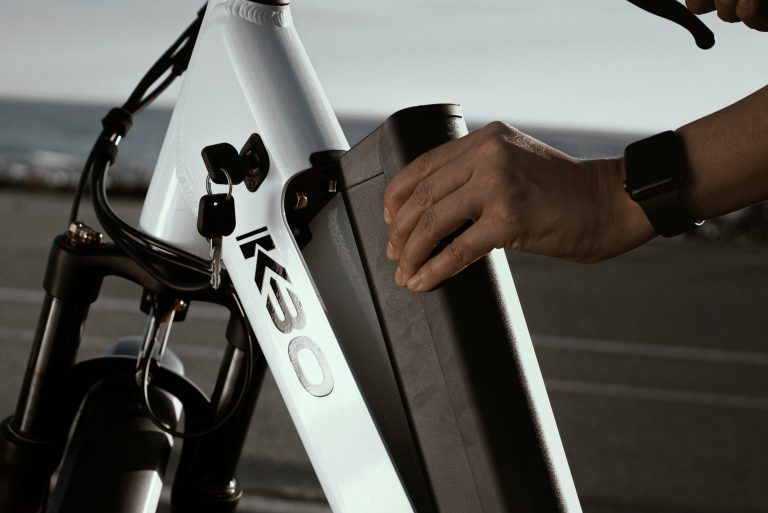What Happens If You Run Out Of Battery On An Ebike?
Imagine cruising along on your electric bike, feeling the wind in your hair as you effortlessly glide through the streets. The freedom and convenience of an ebike are undeniable. But what if, in the midst of your journey, you suddenly find yourself out of battery? Will you be left stranded, desperately pedaling to your destination? Fear not! In this article, we will explore the fascinating world of ebikes and uncover what exactly happens when you run out of battery power. Prepare to be enlightened and reassured as we delve into this intriguing topic.

Walking the Ebike
Convenience of walking the ebike
walking your ebike when the battery runs out can be a convenient option when you find yourself without power. It allows you to continue moving forward without the need for any additional tools or assistance. You can simply walk alongside the bike and take advantage of the lightweight and maneuverability of an ebike. It’s a hassle-free way to get where you need to go when you can no longer rely on the electric assist.
Physical exertion
Walking the ebike does require some physical effort, but it is generally less strenuous than pedaling a non-electric bike. The weight of the ebike is typically lighter than traditional bikes, making it easier to push. The absence of the electric assist may require a bit more leg power, but it can also provide a good opportunity for some low-impact exercise. Walking your ebike can give you a chance to stretch your legs and get some fresh air, while still keeping up a decent pace.
Safety measures
When walking your ebike, it’s important to take proper safety measures. Be mindful of traffic and pedestrians, and make sure to walk on the designated pathways or sidewalks, if available. Use hand signals when crossing the road, and ensure that you are visible to drivers by wearing bright clothing or reflective gear. If possible, walk with a friend or in a group to increase visibility and enhance safety. Remember to always lock your ebike when leaving it unattended, even if you are just walking beside it.
Pushing the Ebike
Advantages of pushing the ebike
Pushing your ebike can provide some advantages over walking it. When you push the bike, you can maintain a faster pace compared to walking, allowing you to reach your destination more quickly. Pushing the ebike also requires less physical effort than pedaling, making it a suitable option for those who may have difficulty with cycling due to physical limitations or fatigue. Additionally, pushing the ebike can be helpful when encountering steep inclines or challenging terrain that may be difficult to navigate on foot.
Physical effort involved
While pushing the ebike may be less physically demanding than riding it, there is still a certain level of exertion involved. The weight of the ebike, combined with the resistance of the tires on the ground, can make pushing a bit challenging. However, with the proper technique and posture, you can minimize the strain on your body. It’s important to engage your core muscles and maintain good posture while pushing, as this will help distribute the weight more evenly and reduce the risk of strain or injury.
Tips for pushing the ebike
To make pushing your ebike easier and more efficient, consider the following tips:
- Position yourself behind the bike, gripping the handlebars firmly.
- Keep your back straight and engage your core muscles.
- Take short and controlled steps as you push the bike forward.
- Use your body weight to your advantage by leaning into the bike slightly.
- Be mindful of your surroundings and adjust your speed accordingly.
- If you encounter any obstacles or uneven surfaces, take caution and proceed with care.
- Take breaks if needed to rest and re-energize.
By following these tips, you can ensure a smoother and more enjoyable experience when pushing your ebike.
Seeking Assistance
Contacting a friend or family member
When you find yourself without battery power on your ebike, one option is to contact a friend or family member for assistance. If you are near a familiar area or someone who knows you well, reaching out to someone close to you can provide a sense of security and reliability. They may be able to bring a spare battery or provide a ride to a nearby charging station. Having a support system in place can make the situation less stressful and ensure that you have access to the help you need.
Calling a taxi or rideshare service
If you are unable to reach out to someone you know or if they are unavailable, calling a taxi or rideshare service can be a convenient solution. Services like Uber or Lyft are widely available in many areas and can be easily accessed through a smartphone app. By simply inputting your location and destination, you can arrange for a driver to pick you up and take you where you need to go. This option is particularly useful if you are in an unfamiliar area or if you need to travel a long distance.
Using public transportation
Public transportation can be a reliable and cost-effective way to reach your destination when your ebike runs out of battery. Check the available bus or train routes in your area and plan your journey accordingly. Many cities now have bike-friendly buses or trains that allow you to bring your ebike on board. This allows you to combine walking or pushing your ebike with public transportation to efficiently navigate your way home or to a nearby charging station.
Alternative Transport
Renting a bike or scooter
If you find yourself in need of immediate transportation after running out of battery on your ebike, renting a bike or scooter can be a convenient solution. Many cities now have bike-sharing or scooter-sharing services that offer short-term rentals. These services can be easily accessed through mobile apps, allowing you to locate and rent a bike or scooter nearby. Utilizing these services can quickly get you back on the move, while still enjoying the benefits of electric-assisted travel.
Requesting a car rental
Another alternative to consider when your ebike’s battery is depleted is renting a car. Car rental agencies provide a wide range of vehicles to suit your needs, from compact cars to SUVs. Renting a car allows you to continue your journey without the physical exertion required by walking or pushing your ebike. This option is particularly useful for longer distances or if you need to transport your ebike to a charging station or a more convenient location.
Using a bike-sharing service
If you are not comfortable with pushing or walking your ebike, another alternative is to use a bike-sharing service. Many cities offer bike-sharing programs that allow you to rent a traditional bicycle for a short period of time. This can be a great option if you prefer the familiarity and ease of riding a regular bike. Bike-sharing services often have docking stations located throughout the city, making it easy to pick up a bike when needed and return it when you reach your destination.

Finding a Charging Station
Locating nearby charging stations
When your ebike’s battery is running low, one of the first things you should do is locate the nearest charging station. Many cities now have dedicated charging stations specifically designed for electric vehicles, including ebikes. These charging stations are often equipped with multiple charging ports, allowing you to connect your ebike and recharge its battery. Websites, mobile apps, or online maps can help you find the closest charging station in your area.
Using charging station apps
To make the process of finding a charging station even more convenient, consider using charging station apps. These apps are designed to help electric vehicle owners locate the nearest charging stations and provide real-time information on their availability and charging speed. Some apps even allow you to reserve a charging spot in advance, ensuring that you will have access to a charging port when you arrive. By utilizing charging station apps, you can save time and easily plan your route around the availability of charging stations.
Charging options at the station
Charging stations typically offer different options for charging your ebike’s battery. The most common options include:
- Standard Charging: This is the slowest charging option but is suitable for long-term charging when you have time to spare. It usually takes several hours to fully charge your ebike’s battery using this method.
- Fast Charging: As the name suggests, fast charging can significantly reduce the charging time compared to standard charging. It is a more efficient option if you need your battery to recharge quickly. However, keep in mind that fast charging may slightly decrease the overall lifespan of your battery.
- Rapid Charging: Rapid charging is the quickest option available at some charging stations. This high-power charging method can rapidly replenish your battery to a reasonable level in a short time. However, it is important to note that rapid charging may generate more heat, which can impact the battery’s overall performance and longevity.
Always be sure to familiarize yourself with the different charging options available at the charging station and choose the one that best suits your needs at the time.
Carry a Spare Battery
Benefits of carrying a spare battery
Carrying a spare battery for your ebike can be a game-changer when your primary battery runs out. It provides you with a backup power source, ensuring that you can continue your journey without interruption. By having a spare battery on hand, you have the ability to double your range and explore more areas without the fear of running out of power. It gives you peace of mind and allows you to enjoy the convenience of electric-assisted travel without any restrictions.
Choosing the right spare battery
When selecting a spare battery for your ebike, there are several factors to consider. First, ensure that the spare battery is compatible with your specific ebike model. Different ebikes require different battery specifications, so it’s important to choose one that fits correctly in your ebike’s battery compartment. Additionally, consider the capacity of the spare battery. Opt for a battery with a similar or higher capacity than your primary battery to maximize your range and the time between charges. Lastly, take into account the weight and size of the spare battery, as it will affect your overall riding experience and the ease of carrying it.
Safety precautions
While carrying a spare battery can be beneficial, it’s important to take certain safety precautions. Make sure the spare battery is securely stored and protected from damage during transportation. Avoid exposing the spare battery to extreme temperatures or direct sunlight, as this can affect its performance and lifespan. If you need to charge the spare battery, use a certified charger and follow the manufacturer’s instructions carefully. Finally, be aware of any regulations or restrictions regarding spare batteries for ebikes in your area, as different jurisdictions may have specific guidelines in place.

Planning Your Routes
Researching charging points along the route
When embarking on a journey with your ebike, it’s essential to plan your routes carefully, especially when it comes to charging points. Research the areas along your intended route and identify any charging stations or other electric vehicle-friendly locations where you can replenish your battery. Websites, apps, or online forums dedicated to electric vehicle travel can provide valuable information about charging infrastructure and available amenities.
Picking routes with charging options
To ensure that you have access to charging options throughout your journey, choose routes that pass by or are in close proximity to charging stations. Selecting routes with ample charging options reduces the risk of being stranded without power. It also allows you to plan your stops strategically, ensuring that you can recharge your battery while enjoying a meal, exploring a new area, or taking a break. By intentionally incorporating charging points into your route, you can maintain a consistent power supply and extend the range of your ebike.
Creating backup plans
Even with careful planning, unexpected situations can arise. It’s important to have backup plans in place in case you encounter challenges or are unable to access charging stations as planned. Research alternative routes that may have charging options, or identify nearby facilities, such as cafés or public buildings, where you can request to use an electrical outlet in an emergency. Having multiple backup options ensures that you can adapt to changing circumstances and mitigate any potential issues that may arise during your journey.
Conserving Battery Power
Using pedal-assist mode
Utilizing the pedal-assist mode on your ebike is an effective way to conserve battery power. This mode enhances your pedaling efforts by providing varying levels of electric assistance, allowing you to cover longer distances with less strain on the battery. By actively engaging in pedaling, you can significantly reduce the power consumption and extend the overall range of your battery. Pedal-assist mode is particularly useful when navigating hilly terrain or when you need an extra boost to maintain your desired speed.
Adjusting power levels
Most ebikes offer different power levels that determine the amount of electric assist provided. By adjusting the power level settings on your ebike, you can conserve battery power and increase the efficiency of your ride. Experiment with the different power levels available and find the sweet spot that balances your desired level of assistance with battery conservation. Keep in mind that higher power levels may result in faster depletion of the battery, whereas lower power levels may require more physical effort from you.
Minimizing unnecessary use
To conserve battery power, it’s important to minimize unnecessary use of the electric motor on your ebike. Avoid engaging the motor when it’s not needed, such as when traveling downhill or on flat terrain. Instead, rely on your pedaling power to maintain momentum and conserve battery energy for when it’s truly necessary. Additionally, reduce or eliminate any unnecessary accessories or electrical devices that may drain the battery, such as lights or phone chargers. By being mindful of your energy consumption and only using the electric assist when necessary, you can maximize the lifespan of your battery and prolong the distance you can travel.

Optimizing Battery Life
Proper charging habits
To optimize the life of your ebike’s battery, it’s crucial to develop proper charging habits. Follow the manufacturer’s guidelines for charging your specific battery model and avoid overcharging or undercharging. Generally, it is recommended to charge your battery when it reaches around 20-30% capacity, rather than letting it drain completely. Regularly monitoring and maintaining the charge level of your battery can help extend its lifespan and overall performance.
Avoiding extreme temperatures
Extreme temperatures can significantly impact the performance and longevity of your ebike’s battery. Avoid exposing the battery to extreme heat or freezing temperatures, as this can cause damage or reduce its capacity. If you cannot store your ebike in a temperature-controlled environment, consider removing the battery and storing it separately in a cool and dry place. By protecting the battery from extreme temperatures, you can ensure that it remains in optimal condition and continues to provide reliable power for your rides.
Maintenance and regular checks
Regular maintenance and checks are essential for optimizing battery life. Keep your ebike clean and dry, and regularly inspect the battery for any signs of wear or damage. Check the connections and ensure that they are secure, as loose connections can lead to inefficiencies and poor performance. Regularly clean the battery terminals and contact points to remove any dirt or corrosion that may affect the conductivity. By incorporating these maintenance practices into your routine, you can prolong the life of your battery and enjoy consistent performance throughout its lifespan.
Educating Yourself
Understanding battery capacity
To effectively manage the battery life of your ebike, it’s important to understand its capacity. Battery capacity is typically measured in watt-hours (Wh) and indicates the total amount of energy the battery can store. The higher the watt-hour rating, the more range you can expect from your ebike. Understanding your battery’s capacity allows you to plan your rides accordingly and ensures that you have a clear idea of the distance you can confidently travel before needing to recharge.
Knowing the estimated range
Knowing the estimated range of your ebike is crucial for planning your journeys. The estimated range is an approximation of the distance you can travel on a single charge, based on factors such as battery capacity, power consumption, terrain, and riding conditions. Consult the manufacturer’s specifications or online resources to determine the estimated range of your specific ebike model. Keep in mind that the estimated range is a rough guideline and can vary depending on various factors. By being aware of the estimated range, you can plan your rides more effectively and avoid unexpected battery depletion.
Learning from experienced riders
One of the best ways to educate yourself about ebikes and battery management is by learning from experienced riders. Engage with online forums, social media groups, or local cycling communities to connect with individuals who have extensive knowledge and firsthand experience. These seasoned riders can provide valuable insights, tips, and recommendations on battery optimization, charging techniques, and route planning. By tapping into their expertise, you can enhance your understanding of ebike battery management and make more informed decisions regarding your own ebike usage.
In conclusion, running out of battery on your ebike doesn’t have to be a stressful situation. By familiarizing yourself with the various options and strategies outlined in this article, you can navigate such scenarios with ease. Walking or pushing your ebike can be convenient and present opportunities for exercise, while seeking assistance from friends, family, or transportation services can help you reach your destination. Planning your routes, carrying a spare battery, and conserving battery power are key strategies for avoiding battery depletion. By optimizing battery life through proper charging habits, avoiding extreme temperatures, and regular maintenance, you can prolong the lifespan of your battery. Lastly, educating yourself about battery capacity, estimated range, and learning from experienced riders can enhance your overall knowledge and ensure a smooth and enjoyable ebike experience. So go ahead, confidently hit the road on your ebike, knowing that you are well-prepared for any battery-related challenge that may come your way.







